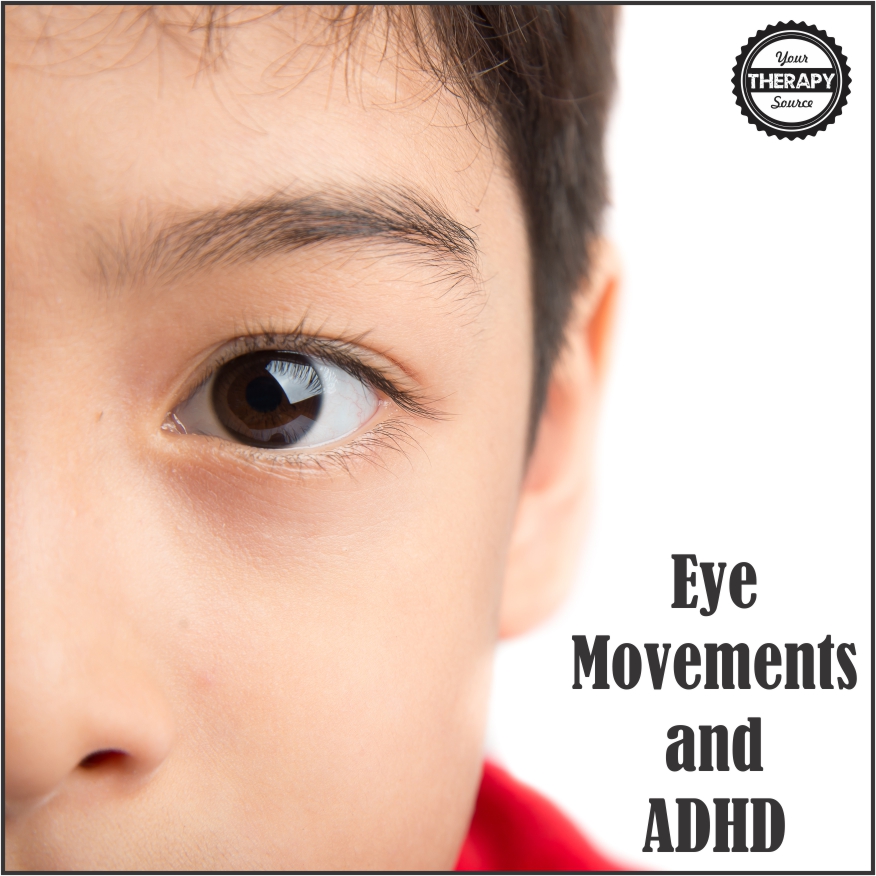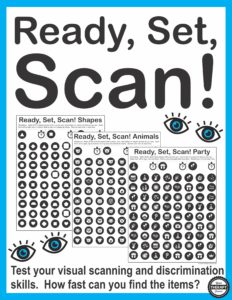Eye Movements and ADHD
 Eye Movements and ADHD
Eye Movements and ADHD
Children with ADHD have decreased attention span and inhibition and increased hyperactivity and impulsivity. Recent research discussed eye movements and ADHD. Approximately 3-7% of school-aged children have ADHD, therefore, learning more about the visual system of these children is important.
Research on the Visual System and ADHD
There has been a considerable amount of research on the visual system and ADHD. The research indicates the following:
- individuals with ADHD display suppressed saccadic eye movements during fixation. Normal saccadic eye movements are when the eyes bounce and move to fixate on different objects but individuals with ADHD may move the eyes too quickly when fixation is necessary.
- the saccadic response is slower and more variable possibly influencing poor eye control in individuals with ADHD.
- unlike healthy subjects, children with ADHD do not show an asymmetry in eye movement control where the eyes move faster when controlled by the right cerebral hemisphere.
- slower smooth pursuit eye movements are within the normal range for subjects with ADHD.
Vergence and ADHD
Vergence is eye movements where the eyes move in opposite direction to obtain or maintain focus. The following is a summary of recent research on vergence for healthy subjects:
- when you orient your attention the eyes converge.
- during gaze fixation, the eyes briefly converge after the presentation of a stimulus to indicate the location of an upcoming peripheral target. The eyes weakly converge or do not converge at all after a stimulus that is not informative about the location of the peripheral target.
- the strength and timing of eye vergence correlate with the onset and strength of the visual event–related potentials at parietal locations.
- high stimulus contrast relates to larger modulation of the angle of eye vergence.
There is additional research related to vergence and ADHD specifically:
- attention related eye vergence is poorly present in children with ADHD.
- Convergence insufficiency (the inability to obtain a single visual field while working at a near distance) is prevalent in children with
ADHD and has been shown to relate to attention problems. - the neural circuits controlling vergence and attention may be closely linked.
Vergence and Diagnosing ADHD
Additional research was completed to determine if vergence can be used to help objectively diagnosis ADHD. The researchers found that compared to healthy peers, children with ADHD showed weak to no significant modulation in the angle of eye vergence while performing an attention task. In addition, children with ADHD appeared less sensitive to visual stimulation. Although this may be helpful to add a piece to the puzzle of diagnosing ADHD, the researchers mention that “no method has shown sufficient sensitivity and specificity when predicting “gold standard” clinical diagnoses of ADHD.” In conclusion, the assessment of vergence during a child-friendly attention task is beneficial to help support the diagnosis of ADHD in children.
Reference: Varela Casal, P., Lorena Esposito, F., Morata Martínez, I., Capdevila, A., Solé Puig, M., de la Osa, N., … & Supèr, H. (2018). Clinical validation of eye vergence as an objective marker for diagnosis of ADHD in children. Journal of attention disorders, 1087054717749931.
Check out the complete Ready, Set, Scan digital download.
Ready, Set, Scan encourages:
- visual scanning
- visual attention
- visual tracking
- visual discrimination skills
- visual motor skills
Download a FREE Animal worksheet
Watch the video to see how it in action. Use dot markers, crayons,pencils, pens or even pom poms to mark each item.




